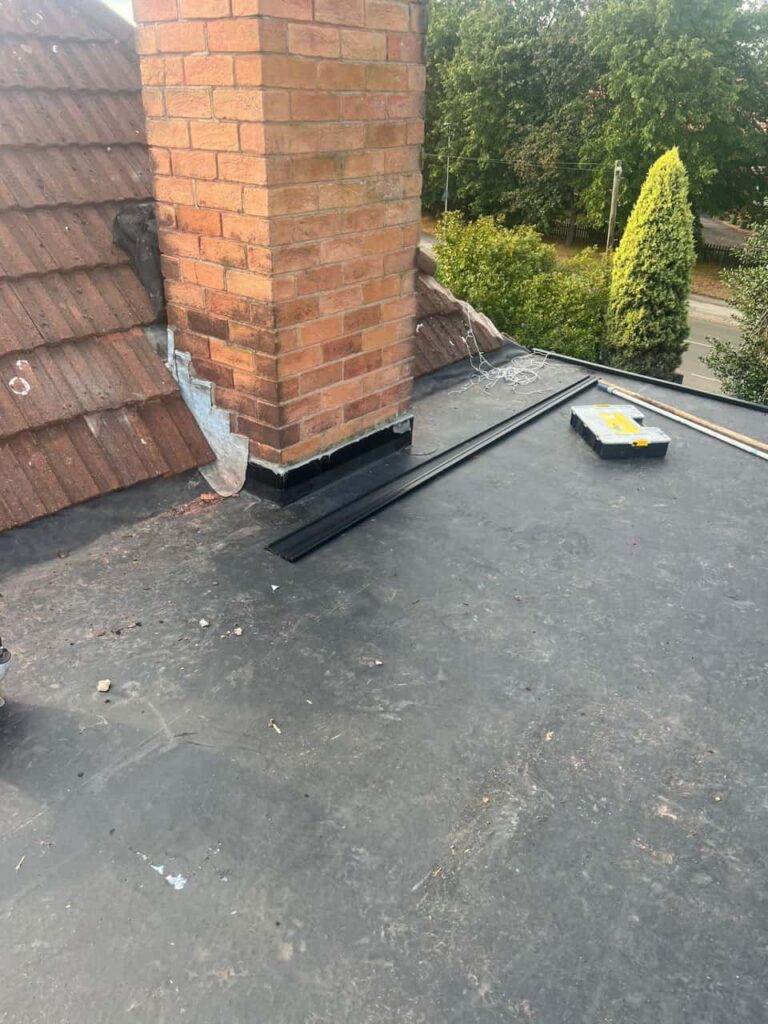Finding roof tiles slipping soon after installation can be both frustrating and concerning. For homeowners in Great Barr, West Midlands, this problem often raises questions about workmanship, materials, or underlying roof structure issues. At Great Barr Roofing Repairs, we frequently inspect and correct roofing problems caused by poor tile fixing, weather exposure, or unsuitable installation methods. Understanding the causes and knowing how to address them is key to preventing further damage and maintaining a secure, watertight roof.
Why Roof Tiles Slip
Roof tiles are designed to withstand decades of exposure to the elements. However, if they begin to slip soon after being fitted, it’s often a sign that something has gone wrong during installation or that the materials used were not properly suited to the conditions.
Common Causes of Slipped Tiles
- Improper Fixing or Nailing
- Tiles need to be secured using the correct type and number of fixings. If nails are too short, corroded, or placed incorrectly, tiles can loosen over time, especially during high winds or heavy rainfall.
- Inexperienced installers may also fail to follow manufacturer guidelines, leading to uneven weight distribution and movement.
- Tiles need to be secured using the correct type and number of fixings. If nails are too short, corroded, or placed incorrectly, tiles can loosen over time, especially during high winds or heavy rainfall.
- Inadequate Mortar Bedding
- On older-style roofs, ridge and verge tiles are often bedded in mortar. If this mortar is poorly mixed, applied unevenly, or not allowed to set properly, it can quickly deteriorate and cause tiles to slip or dislodge.
- On older-style roofs, ridge and verge tiles are often bedded in mortar. If this mortar is poorly mixed, applied unevenly, or not allowed to set properly, it can quickly deteriorate and cause tiles to slip or dislodge.
- Roof Pitch and Design
- The angle of the roof plays an important role in tile stability. Roofs with a lower pitch require specific tiles and fixing methods. If unsuitable materials are used, water and wind pressure can push tiles out of place.
- The angle of the roof plays an important role in tile stability. Roofs with a lower pitch require specific tiles and fixing methods. If unsuitable materials are used, water and wind pressure can push tiles out of place.
- Movement in the Roof Structure
- Timber expansion, shrinkage, or settling in the roof frame can loosen fixings, particularly in older or newly extended properties. Even small movements can cause tiles to slip if they aren’t securely fixed.
- Timber expansion, shrinkage, or settling in the roof frame can loosen fixings, particularly in older or newly extended properties. Even small movements can cause tiles to slip if they aren’t securely fixed.
- Extreme Weather Conditions
- Strong winds, storms, and freeze-thaw cycles can gradually weaken fixings and mortar joints, leading to tiles slipping or cracking. This is especially common in exposed areas of the West Midlands.
- Strong winds, storms, and freeze-thaw cycles can gradually weaken fixings and mortar joints, leading to tiles slipping or cracking. This is especially common in exposed areas of the West Midlands.
The Risks of Ignoring Slipped Tiles
A single slipped tile might not seem serious, but ignoring the issue can lead to bigger problems over time.
- Water ingress: Gaps left by displaced tiles allow water to seep into the underlay, potentially damaging roof timbers and insulation.
- Wind uplift: Missing or loose tiles can increase the risk of further tiles being dislodged during strong winds.
- Structural decay: Persistent leaks weaken the supporting structure and can shorten the lifespan of the entire roof.
- Aesthetic decline: Visibly uneven tiles affect the appearance and value of your property.
Timely repair from professionals such as Great Barr Roofing Repairs prevents minor issues from turning into major structural concerns.
How to Fix and Prevent Slipped Roof Tiles
Addressing slipped tiles isn’t simply about repositioning them — it requires identifying and resolving the root cause.
Professional Repair and Maintenance Steps
- Inspection: A thorough roof assessment is carried out to locate all loose or damaged tiles and determine why they slipped.
- Secure Fixing: Tiles are refitted using correct fixings, clips, or nails as per the roof type and manufacturer specifications.
- Mortar Renewal: If ridge or verge mortar has deteriorated, it is replaced or mechanically fixed for longer durability.
- Check Underlay and Battens: Any damaged or rotting battens are replaced to ensure a secure base.
- Futureproofing: Recommendations may be made for modern dry ridge or dry verge systems, which offer enhanced wind resistance and require less maintenance.
At Great Barr Roofing Repairs, we use proven techniques and materials to ensure the new fixings withstand the local weather conditions typical of the West Midlands.
How to Spot Early Warning Signs
Homeowners can often identify early indications that roof tiles are beginning to fail before significant damage occurs:
- Tiles that appear slightly out of alignment.
- Small gaps or cracks in mortar joints.
- Visible debris or fallen mortar on the ground.
- Increased noise during windy weather.
- Damp patches appearing in loft spaces.
If you notice any of these signs, arranging an inspection promptly can prevent more serious issues from developing.
Why Professional Expertise Matters
Attempting DIY repairs on a sloping roof can be unsafe and may not resolve the underlying problem. Roofing repairs require an understanding of correct fixing systems, weight distribution, and tile compatibility with the roof structure. Great Barr Roofing Repairs provides professional, reliable solutions to ensure every tile is fitted securely, using the right method for your specific roof type.
Conclusion
Slipped roof tiles after installation are a clear sign that attention is needed. Whether the issue stems from poor fixing, weather exposure, or structural movement, acting early prevents costly damage and restores your roof’s stability.
For property owners in Great Barr, West Midlands, Great Barr Roofing Repairs offers expert inspection, repair, and maintenance services to keep your roof safe, secure, and visually appealing all year round.
Call us on: 0121 726 1298
Click here to find out more about Great Barr Roofing Repairs
Click here to complete our contact form and see how we can help with your roofing needs.

